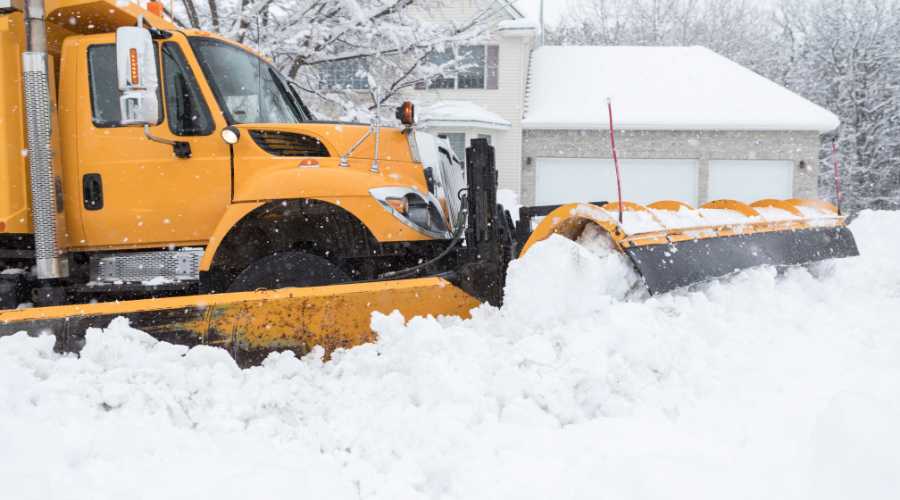Snow plowing businesses play a vital role in ensuring the safety and accessibility of roads, driveways, and parking lots during the winter months.
For many regions with heavy snowfall, snow removal services are essential to maintaining normalcy in everyday life.
As a snow plowing business owner, you can tap into this demand, potentially earning a significant income while also contributing to the well-being of your community.
In this comprehensive guide, we will explore the necessary steps to start your own snow plowing business, from market research to expansion.
Market Research and Planning
A successful snow plowing business begins with thorough market research and planning.
Start by analyzing your local area to determine the demand for snow removal services.
Key factors to consider include:
- Average snowfall: Investigate the average annual snowfall in your region to gauge the need for snow plowing services.
- Competitors: Identify existing snow plowing businesses and assess the level of competition.
- Target customers: Determine whether you will focus on residential clients, commercial clients, or both.
With this information in hand, develop a detailed business plan that outlines your services, pricing structure, startup and operating costs, and revenue projections. A solid business plan not only helps you stay organized, but it can also be crucial when seeking financing.
Legal Requirements and Insurance
Before you can begin operations, ensure you have the proper legal and insurance requirements in place:
- Business structure: Choose the right business structure for your needs, such as a sole proprietorship, partnership, or limited liability company (LLC).
- Licenses and permits: Research and obtain any required licenses and permits, which may vary based on your location and business structure.
- Insurance coverage: Secure appropriate insurance policies to protect your business, including liability insurance, commercial vehicle insurance, and workers’ compensation insurance if you plan to hire employees.
Equipment and Vehicle Selection
Investing in the right equipment and vehicles is critical to the success of your snow plowing business.
Consider the following when making your selections:
- Snow plow attachments and accessories: Research the various types of snow plows available, such as straight blade plows, V-plows, and containment plows. Choose the one that best suits your needs and the type of snow you will encounter.
- Vehicles: Depending on the size of your operation, you may need a pickup truck, heavy-duty truck, or utility vehicle capable of handling the snow plow attachment. Ensure your chosen vehicle meets the necessary weight and power requirements for your plow.
- Maintenance and repair: Factor in the costs of regular maintenance and potential repairs when selecting your equipment and vehicles.
Marketing and Promotion
Effective marketing is essential for attracting customers and growing your snow plowing business.
Consider these strategies:
- Branding: Develop a professional logo and business name that reflects the quality of your services. Use these elements consistently across your marketing materials.
- Online presence: Create a user-friendly website that showcases your services, pricing, and contact information. Utilize social media platforms to engage with potential customers and share updates about your business.
- Networking and word-of-mouth: Connect with local businesses, homeowners, and community organizations to spread the word about your snow plowing services. Offer incentives for customer referrals to encourage word-of-mouth advertising.
Operations and Customer Service
Efficient operations and exceptional customer service are crucial to building a strong reputation and fostering customer loyalty. Keep the following in mind:
- Routing and scheduling: Plan your routes to minimize travel time and prioritize clients based on factors such as location and service frequency. Utilize scheduling software to stay organized.
- Customer service: Communicate clearly and promptly with clients about service expectations, updates, and any potential delays. Be responsive to customer concerns and complaints, demonstrating your commitment to their satisfaction.
- Employee training and safety: If you hire employees, ensure they are well-trained in safe snow plowing techniques and equipment maintenance. Regular safety meetings and ongoing training can help reduce the risk of accidents and damage to property.
Expanding Your Business
As your snow plowing business grows, consider these strategies for expansion:
- Additional services: Offer complementary services like salting, sanding, and sidewalk shoveling to increase your revenue potential and meet your clients’ needs more comprehensively.
- New territories: Research neighboring areas and consider expanding your service area as demand increases.
- Hiring employees and subcontractors: As your client base grows, consider hiring additional staff or partnering with subcontractors to handle increased workload. Be selective in your hiring process, emphasizing experience and a strong work ethic.
- Financial management and reinvestment: Track your expenses and revenues diligently, utilizing budgeting tools and financial software to ensure your business remains profitable. Reinvest in your company by upgrading equipment, investing in new technology, or expanding your marketing efforts.
Conclusion
Starting a successful snow plowing business requires careful planning, market research, investment in the right equipment, effective marketing, and a commitment to excellent customer service.








